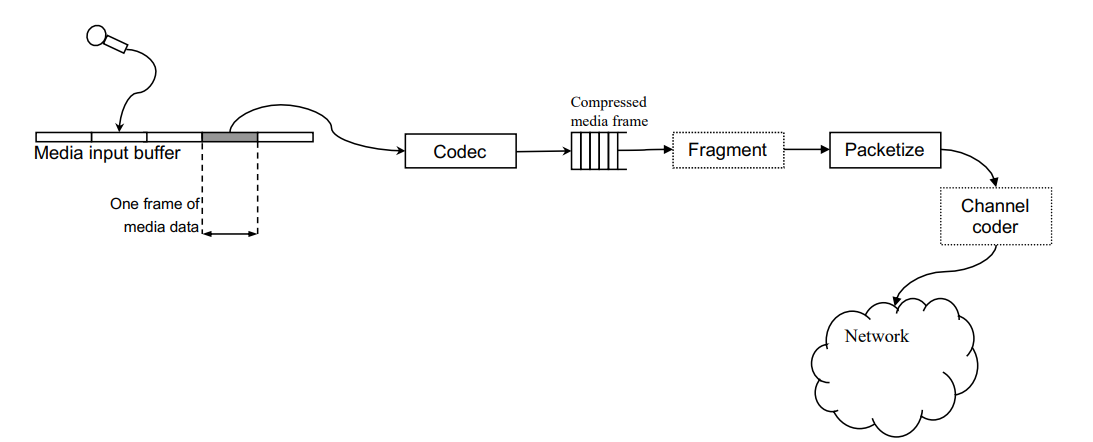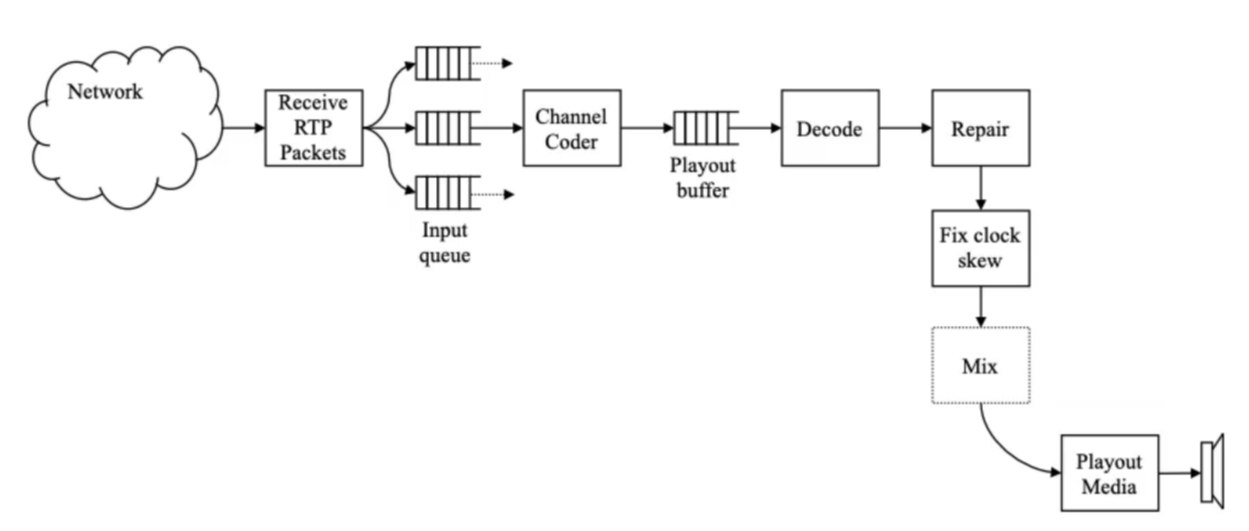Interactive applications have been around for a long time, and come in many forms:
- Telephony
- Voice-over-IP (VoIP)
- Video Conferencing
Many types:
Requirements
Requirements for interactive applications determined by task and human perception:
-
Phone call or video conference One-way mouth-to-ear delay ~150ms maximum for telephony Video conferences want to lip-sync audio and video Audio should be no more than 15ms ahead, or 45ms behind, video
-
Lecture style Mostly unidirectional with occasional questions → can tolerate much higher latency
-
Distributed music performance One-way latency ≪50ms desirable Speed of sound: ~15ms to go from one side of a large orchestra to the other
Media Encoding
Speech Encoding
Typically operates on 20ms packets
- Data rate tens of kilobits
- Background noise packets are much lower encoding quality Highly loss tolerant, can conceal around 10-20% random packet loss without noticing Burst losses are less well concealed
Video Encoding
Video frame rate/resolution is highly variable:
- High def H.264 is around 2-4Mbps
- Frame rates from 25-60fps common
- I-frame ⇒ tens of packets; P-frames ⇒ single/few packets Not very loss tolerant
- No scene changes to reset decoder state to known good value
- Retransmissions possible in some cases; forward error correction more typical
General Transmission Path

- Frames of media data are captured periodically
- Codec compresses media frames
- Compressed frames fragmented into packets
- Transmitted over the network
General Reception Path

- UDP packets containing RTP protocol data arrive
- Separated according to sender
- Channel coder repairs loss using forward error correction
- Additional packets sent along with the media, to allow some repair without needed retransmission
- Playout buffer used to reconstruct order, smooth timing
- Media is decompressed, packet loss concealed, and clock skew corrected
- Recovered media is rendered to user
Forward Error Correction (FEC)
Retransmission possible, but often takes too long – Packet should have been played out before retransmission arrives Forward error correction (FEC) often used instead Additional FEC packets are sent along with the original data Contain error correcting codes e.g., the Exclusive-OR (XOR) of the original packets – many different FEC schemes If some original packets are lost but the FEC packets arrive, original data can be reconstructed